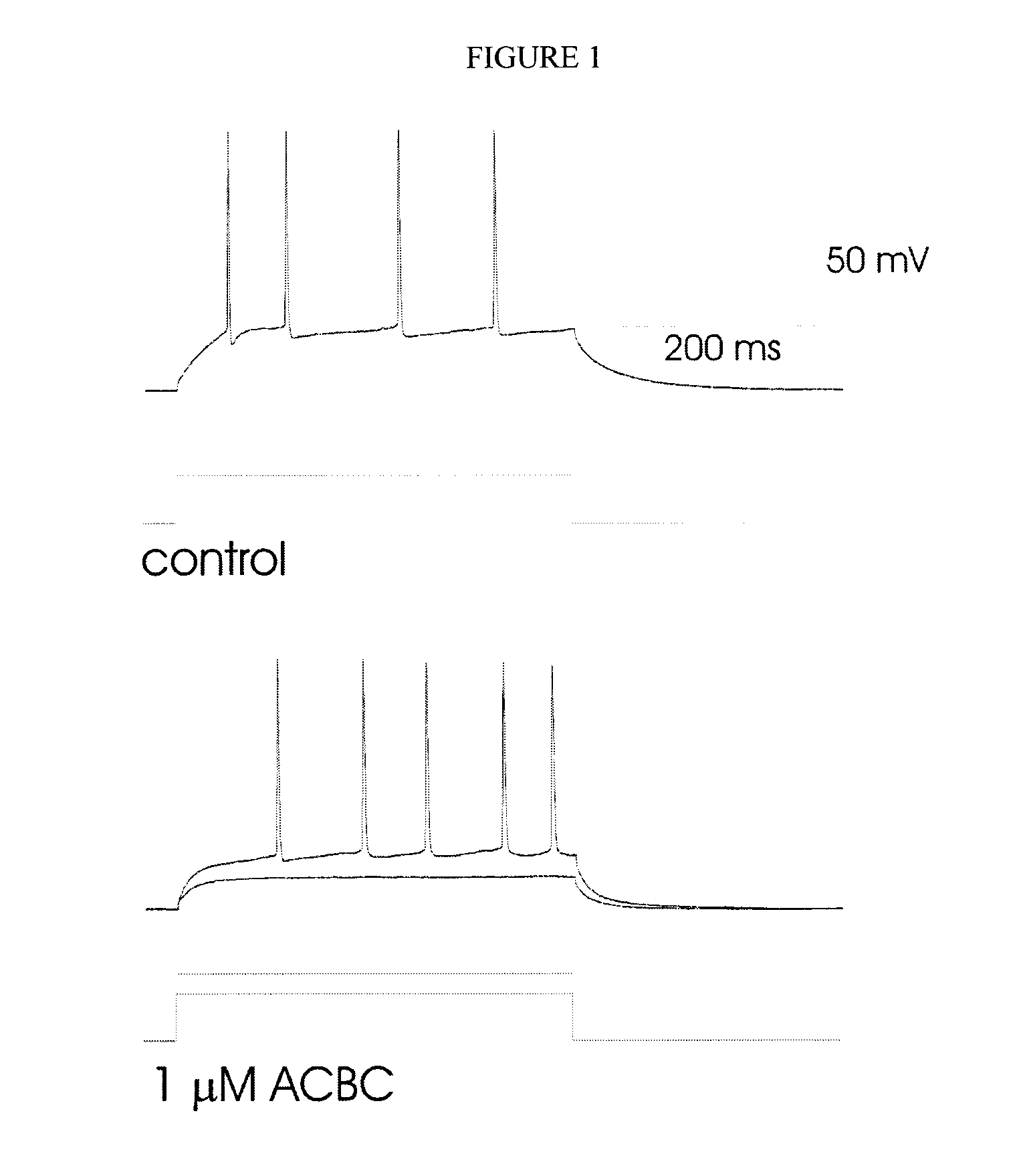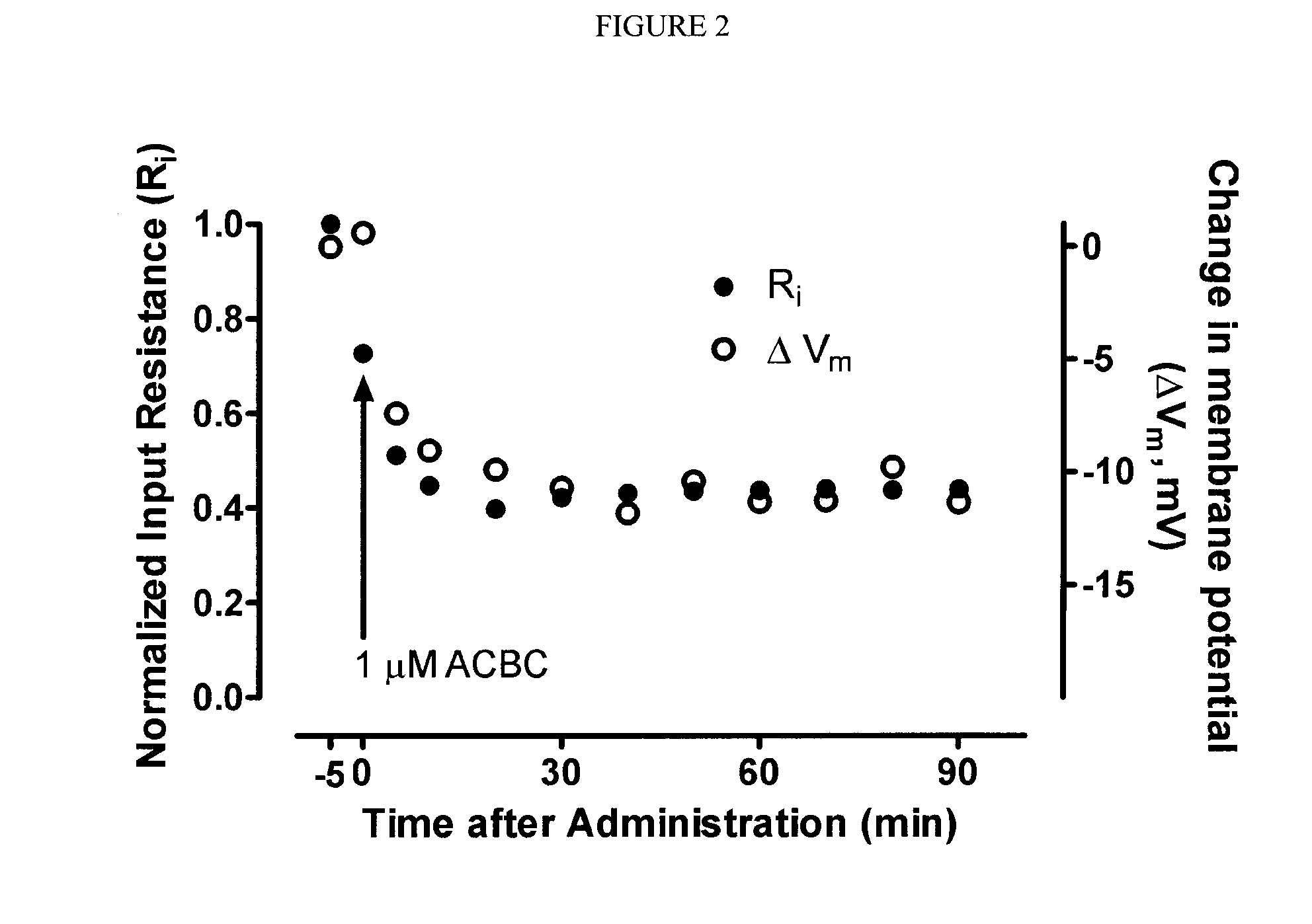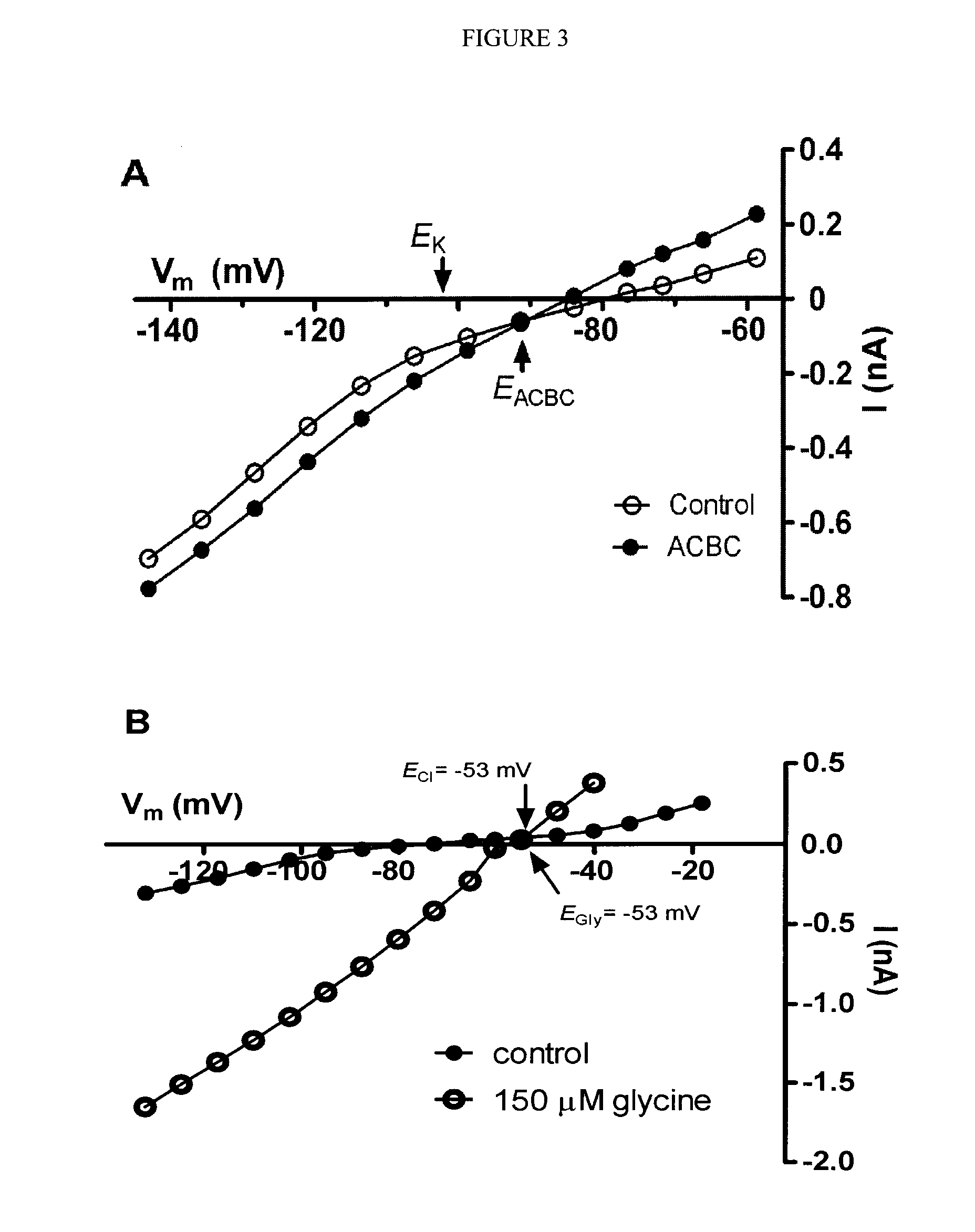Cyclic amino acids for the treatment of pain
a technology of amino acids and pain, applied in the field of pain treatment drugs, can solve the problems of limiting the clinical efficacy of these drugs, affecting the clinical effect of these drugs, and significant psychological and emotional problems, so as to reduce the incidence of side effects, improve the effect of properties, and reduce the toxicity
- Summary
- Abstract
- Description
- Claims
- Application Information
AI Technical Summary
Benefits of technology
Problems solved by technology
Method used
Image
Examples
example 1
Treatment of Thalamic Neurons with ACBC
[0148]Current- and voltage-clamp recording techniques were used to determine the effects of ACBC on intrinsic membrane currents of thalamic neurons in in vitro slice preparations, from the brain of Sprague-Dawley rats (13-15 day-old). The procedures for recording and maintenance conditions were similar to those previously described (Wan, Mathers and Puil, Neuroscience 121: 947-958, 2003). Neurons of the ventrobasal nuclei were identified under a differential interference contrast microscope. Whole cell patch-clamp recordings were obtained using an Axoclamp 2A amplifier in both the current- and voltage-clamp modes. Input resistance was measured from <5 mV voltage responses to hyperpolarizing current pulses. In voltage clamp, current-voltage relationships were determined between −50 and −100 mV. ACBC was applied by bath perfusion at 1-2 ml / min.
[0149]ACBC depressed action potential firing evoked by intracellular injections of current pulses into t...
example 2
Effect of Intrathecal Application of ACBC on Peripheral Acute and Chronic Pain
[0151]The effects of an example compound (ACBC) of formula I were determined in an acute and chronic peripheral pain model (Kolesnikov, Cristea, Oksman, Torosjan, and Wilson, Brain Research 1029: 217-223, 2004). Groups of mice (n=5) were injected intrathecally into the lumbar segment with ACBC, 5 μL of 250 mM, at 5 minutes prior to subcutaneous formalin injection into the right hindpaw (5% in 20 μL). The mice were monitored for 40 minutes for licking activity and assessed according to the method of Abbott, Franklin, and Westbrook Pain 60; 91-102, 1995. The cumulative licking activity in seconds per 5 minute bin was plotted, comparing the results obtained by treatment with artificial Cerebral Spinal Fluid (aCSF) control or ACBC.
[0152]At the same time as the analgesia was accessed, the sedation effects of ACBC were determined in the acute and chronic peripheral pain formalin foot model. Groups of mice (n=5) ...
example 3
Subcutaneous Injection of Compound ACBC Reduces Peripheral Acute and Chronic Pain
[0155]Systemic effects of an example compound (ACBC) of formula I were determined in the acute and chronic peripheral pain model. This model involves pre-treatment with the test compound and injection of formalin (5% in 20 microliters) into the right hindpaw of mice. ACBC was injected subcutaneously 5 minutes prior to formalin injection. The mice were monitored for 40 minutes for licking activity and assessed according to the method of Example 2. The up and down method of Dixon and Mood was used to establish the ED50. Block was defined as a decrease of 60% from controlled cumulated licking, comparing the results obtained with subcutaneous vehicle control to those with ACBC. The ED50 for the reduction of paw licking by 60% was found to be 94 mg / kg with a standard deviation of 10 mg / kg (see FIG. 7).
PUM
| Property | Measurement | Unit |
|---|---|---|
| holding current | aaaaa | aaaaa |
| weight % | aaaaa | aaaaa |
| weight % | aaaaa | aaaaa |
Abstract
Description
Claims
Application Information
 Login to View More
Login to View More - R&D
- Intellectual Property
- Life Sciences
- Materials
- Tech Scout
- Unparalleled Data Quality
- Higher Quality Content
- 60% Fewer Hallucinations
Browse by: Latest US Patents, China's latest patents, Technical Efficacy Thesaurus, Application Domain, Technology Topic, Popular Technical Reports.
© 2025 PatSnap. All rights reserved.Legal|Privacy policy|Modern Slavery Act Transparency Statement|Sitemap|About US| Contact US: help@patsnap.com



